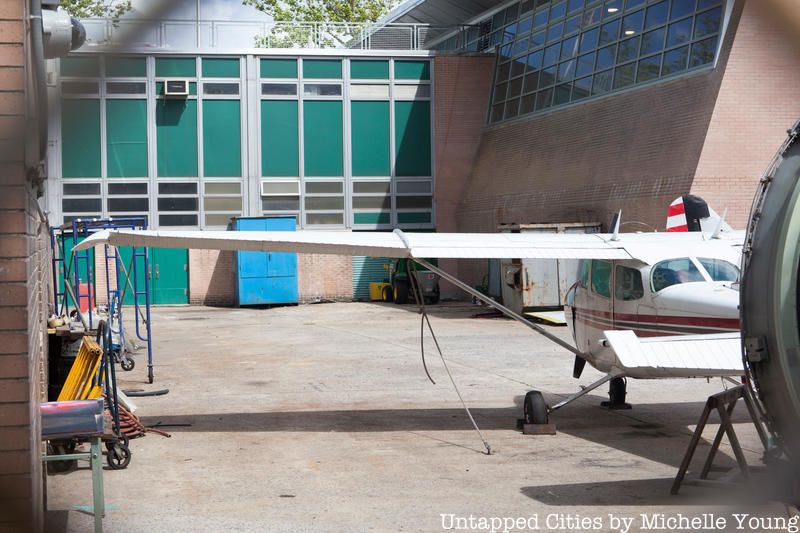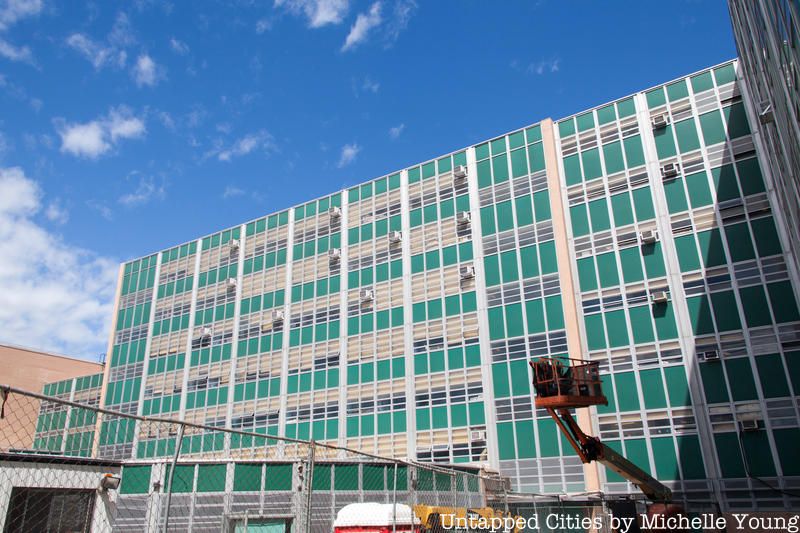100th Anniversary Great Nave Tour at the Cathedral of St. John the Divine
Celebrate the 1925 construction of the stunning nave inside the world's largest Gothic cathedral!


Anybody who has ventured through western Queens can attest to having a “What the heck!?” moment when they first witness the array of airliners and World War II-era bombers parked behind Long Island City’s Aviation High School. Not surprisingly, the activities that go on behind the walls of this unusual institution are just as remarkable as its eye-catching exterior. From steel welding to arithmetic, we’ve got the lowdown on the Aviation Career & Technical Education High School in Queens.
Formerly known as the School of Aviation Trades, the Aviation High School looks almost identical to the way it did when it opened in 1954. It has a current enrollment rate of 2,224 students and as of last year, it has been ranked by the US News and World Report as the Best High School in the Bronze Category.
Besides the mini-aircraft hangar in the backyard though, what truly makes this a school of aviation are the variety of rigorous technical programs. According to Estrella Ham, an ex-Aviation School student whose experience was detailed in the Village Voice, a student’s day at the Aviation High School begins with the sound of riveting and banging metal.

A third of every student’s day at the high school is spent in the shop and Ham says that for her first project, she was required to make a model airplane from scratch out of sheet metal. Needless to say, being a student at the Aviation High School is tough work. An Aviation Junior’s day usually beings at 7:15 a.m. and ends at 4:15 p.m., and the hard work that they put in can be best summed up by one Aviation senior who said “If you’re sitting down that means you’re not working.”
This seemingly uncommon focus for a New York City public school is not so uncommon considering Queens’ history with aviation. Aviation was big business for Queens and Long Island following the Second World War. The high school was specifically designed with the growing demand for experienced aviation workers in mind, which is why the school was originally built with a budgeted cost of $8,465,000.

Aviation mechanics is not only useful to students who are interested in entering the industry though. According to Ham, the skills learned at the Aviation High School are highly transferable. Sure, many students at the school end up becoming mechanics. In fact, 12 percent of all the aviation mechanics in the United States graduated from the Aviation High School in Queens.

But the skills required to understand the complex mechanics of an airplane give the students the ability to accomplish many other difficult processes. That’s not to mention the loads of other aviation careers that are introduced through learning about the industry, which include pilots as well as aviation lawyers and doctors. This is why the Aviation High School should not only be a local sightseeing curiosity, but also a big source of pride for Queens residents.
If you are interested in aviation in the five boroughs, read here about how somebody hid a plane in Bushwick!
Contact the author @DouglasCapraro
Subscribe to our newsletter